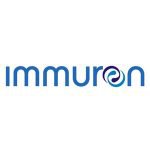Immuron targets the gut not the liver
Hey! Looks like you have stumbled on the section of our website where we have archived articles from our old business model.
In 2019 the original founding team returned to run Next Investors, we changed our business model to only write about stocks we carefully research and are invested in for the long term.
The below articles were written under our previous business model. We have kept these articles online here for your reference.
Our new mission is to build a high performing ASX micro cap investment portfolio and share our research, analysis and investment strategy with our readers.
Click Here to View Latest Articles
NB: This article by Juliet Preston was originally published on MedCity News: medcitynews.com
Surprise, surprise; fatty liver disease is associated with a poor Western diet.
That’s not a revelation, but Immuron has an interesting take on exactly how a high fat and high sugar diet help drive the inflammation behind NASH.
Approximately five percent (15.9 million) of Americans are believed to have non-alcoholic steatohepatitis (NASH), but that’s just the tip of the iceberg. It comes as a progression of non-alcoholic fatty liver disease (NAFLD), which affects an estimated 75-100 million Americans. With such solid
With such solid blockbuster potential, startups and Big Pharma are pouring into the field.
Immuron is taking a somewhat radical approach. Its investigational NASH drug called IMM-124E targets bacteria as a key driver of liver inflammation. The formulation is manufactured from bovine colostrum, explained CEO Thomas Liquard in a recent phone interview.
“We’re basically able to engineer colostrum to produce a specific set of antibodies that we can use to target just about any bacteria in the gut, without affecting the rest of the microbiota,” he said.
Headquartered in Melbourne, Australia, Immuron’s proof-of-concept is an over-the-counter product called Travelan, available in the United States, Canada, and a handful of other countries. Based on a small placebo-controlled trial, Travelan prevented new cases of travelers’ diarrhea with 90 percent efficacy, Liquard said. It does this by targeting E. coli, the bacteria responsible for a majority of cases.
The company moved on to two clinical applications: Clostridium difficile (c. diff) infections and NASH, which is now in Phase 2 trials.
IMM-124E is an interesting take on NASH. It accepts that a major contributing factor is the poor quality of the Western diet — but it’s not the long-term build-up of fat that does the damage.
“The high levels of sugar and fat in our diet, especially glucose, creates an overgrowth of Gram-negative bacteria in the gut,” Liquard explained.
Not all Gram-negative bacteria are bad, he noted. They do, however, all share a common feature known as a lipopolysaccharide (LPS) receptor. According to Liquard, when the bacteria dies or sheds, pro-inflammatory byproducts of LPS enter the bloodstream.
“LPS is not the pathway per se, it’s a trigger of inflammation,” he said. It causes injury, which leads to the development of NASH.
Because the liver is right next to the intestines and stomach, it takes the biggest hit when the gut bacteria shed LPS into the bloodstream. By targeting certain Gram-negative bacteria, IMM-124E is designed to prevent the overflow of LPS into the liver.
“We’re not an antibiotic, so we don’t kill the bacteria,” Liquard explained. “We block that overgrowth of bacteria in the gut without destroying the rest of the microbiota.”
There are a number of benefits to this approach. With its novel mechanism, IMM-124E would likely pair well with any future NASH therapies — or drugs for the many comorbidities found in this patient population, such as heart disease and metabolic syndrome. Targeting the Gram-negative gut bacteria could also cut down on LPS-driven inflammation and damage in other organs such as the pancreas, which Liquard said was demonstrated in the Phase 1 trial.
There also seems to be some sort of feed-forward effect beyond the LPS suppression as the body gets a handle on the inflammation.
“Because you decrease the levels of LPS within the gut, you see an anti-inflammatory response from patients,” Liquard said. “In all of our studies, you see the cytokines going down, you see regulatory T-cells – which are the T-cells that regulate inflammation – go down. The type of regulatory T-cells that decreases inflammation goes up.”
A microbiota approach also has the ability to treat a wide range of patients. That differs from any other companies, he said, which target specific pathways that may only apply to a subset of patients. With a lack of biomarkers, it’s hard to know who to treat.
The challenge of treating a sick population is also front of mind for the FDA. Any potential therapies need to be suitable for chronic use in patients with obesity-related comorbidities. An investigational NASH drug from Intercept Pharmaceuticals, for example, appears to increase LDL-cholesterol levels, a major concern in this patient population.
For Immuron, the broad applicability of IMM-124E may pose a novel hurdle. Where to start?
“We need to be very strategic in terms of how we bite that NASH apple,” Liquard said. “To make sure we don’t bite off more than we can chew.”
Editor’s note: Immuron (ASX:IMC) represents a speculative investment and those considering this stock for their portfolio should seek professional financial advice before making a decision.
General Information Only
S3 Consortium Pty Ltd (S3, ‘we’, ‘us’, ‘our’) (CAR No. 433913) is a corporate authorised representative of LeMessurier Securities Pty Ltd (AFSL No. 296877). The information contained in this article is general information and is for informational purposes only. Any advice is general advice only. Any advice contained in this article does not constitute personal advice and S3 has not taken into consideration your personal objectives, financial situation or needs. Please seek your own independent professional advice before making any financial investment decision. Those persons acting upon information contained in this article do so entirely at their own risk.
Conflicts of Interest Notice
S3 and its associated entities may hold investments in companies featured in its articles, including through being paid in the securities of the companies we provide commentary on. We disclose the securities held in relation to a particular company that we provide commentary on. Refer to our Disclosure Policy for information on our self-imposed trading blackouts, hold conditions and de-risking (sell conditions) which seek to mitigate against any potential conflicts of interest.
Publication Notice and Disclaimer
The information contained in this article is current as at the publication date. At the time of publishing, the information contained in this article is based on sources which are available in the public domain that we consider to be reliable, and our own analysis of those sources. The views of the author may not reflect the views of the AFSL holder. Any decision by you to purchase securities in the companies featured in this article should be done so after you have sought your own independent professional advice regarding this information and made your own inquiries as to the validity of any information in this article.
Any forward-looking statements contained in this article are not guarantees or predictions of future performance, and involve known and unknown risks, uncertainties and other factors, many of which are beyond our control, and which may cause actual results or performance of companies featured to differ materially from those expressed in the statements contained in this article. S3 cannot and does not give any assurance that the results or performance expressed or implied by any forward-looking statements contained in this article will actually occur and readers are cautioned not to put undue reliance on forward-looking statements.
This article may include references to our past investing performance. Past performance is not a reliable indicator of our future investing performance.






